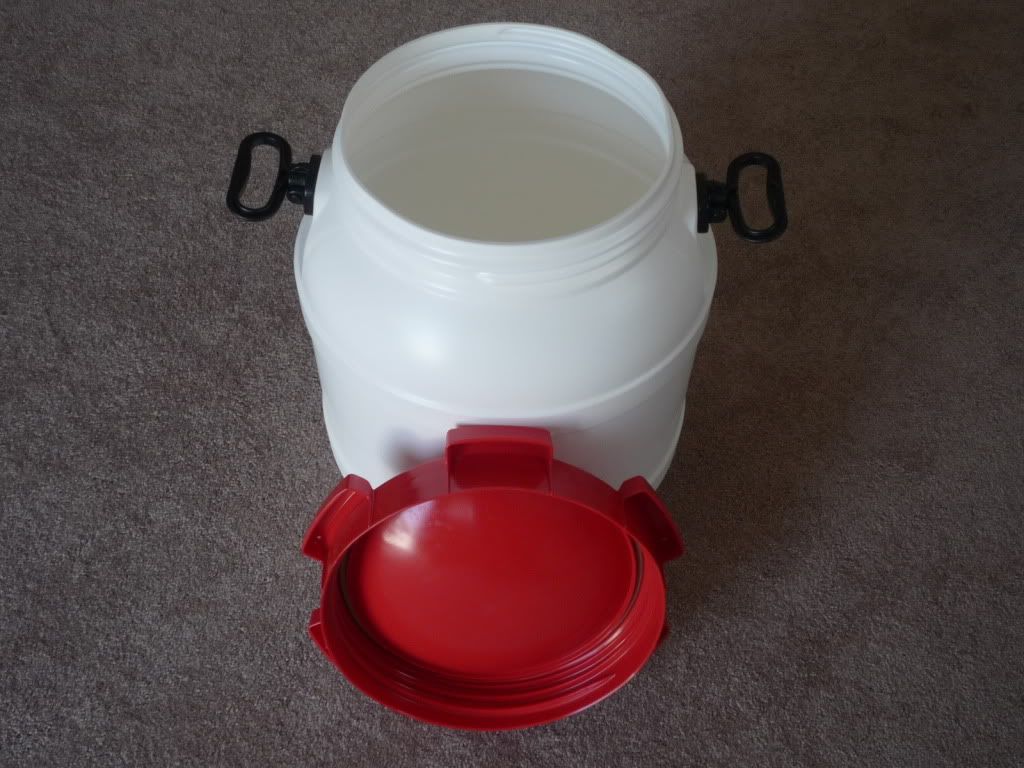Brewing_on_the_Internet
Well-Known Member
- Joined
- Aug 11, 2013
- Messages
- 67
- Reaction score
- 2
I plan on doing a Flanders red and AmandaK's extract lambic using two 13 gallon hdpe2 barrel. Has anyone tried saran wrapping the whole barrel with just the airlock sticking out to reduce oxygen permeability?
Would it be better to do a 12.5 gallon batch to reduce headspace? To prevent a nasty blow out and losing a gallon of wort, let 10 gallons ferment first.
When fermentation dies down, add in another 2.5 gallons.
pic of barrels

Would it be better to do a 12.5 gallon batch to reduce headspace? To prevent a nasty blow out and losing a gallon of wort, let 10 gallons ferment first.
When fermentation dies down, add in another 2.5 gallons.
pic of barrels




